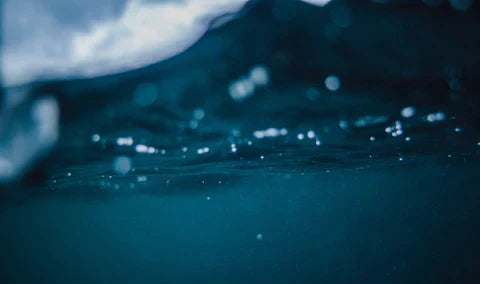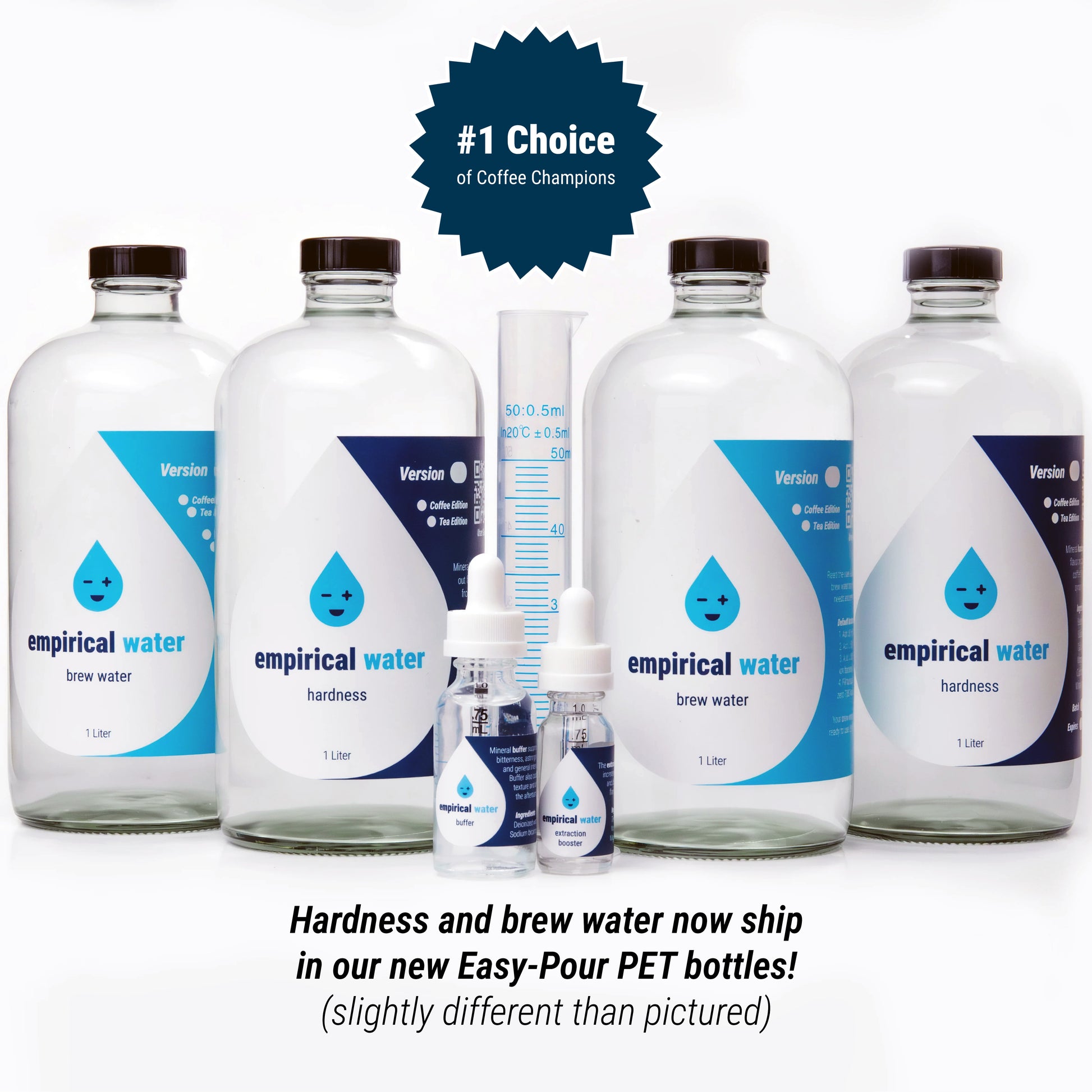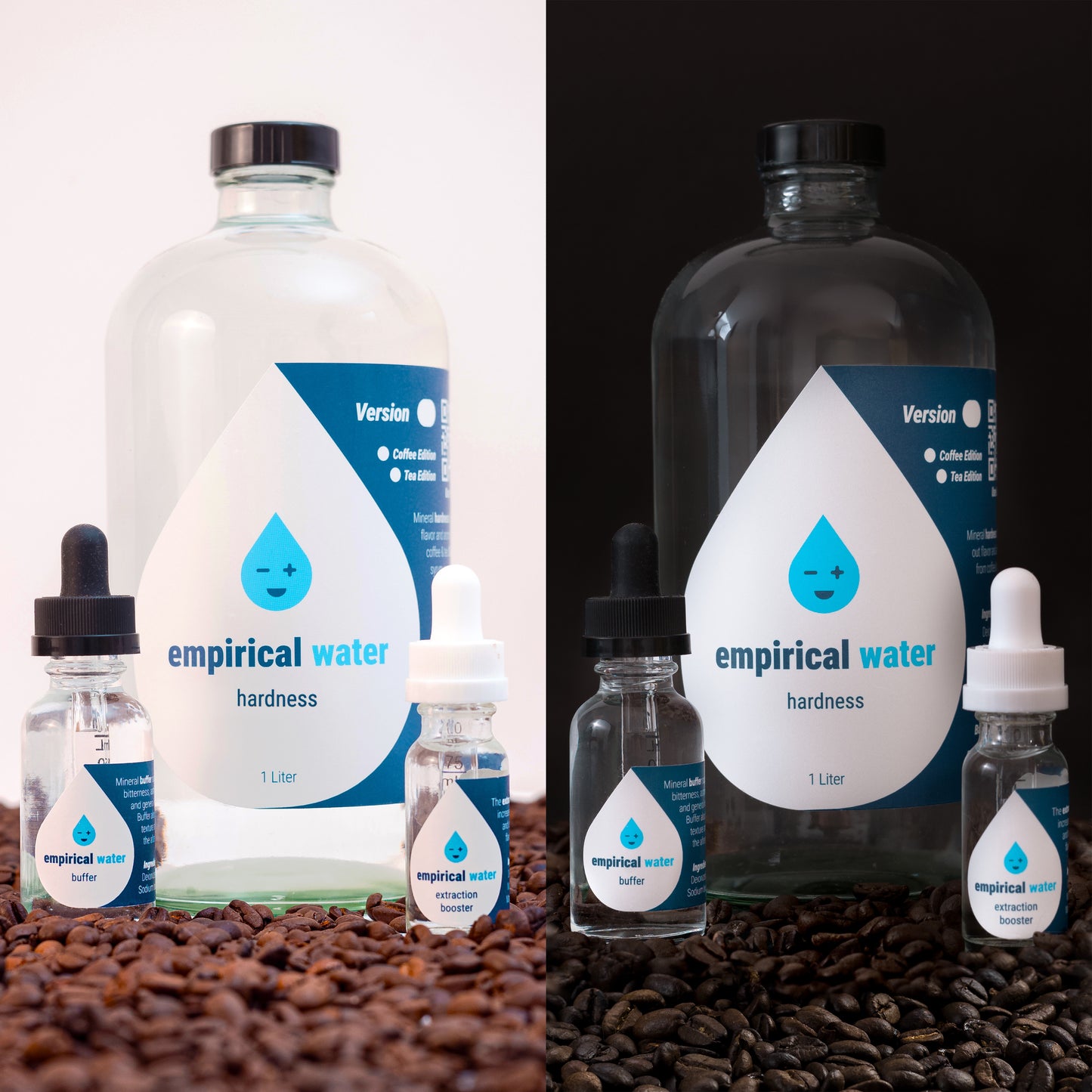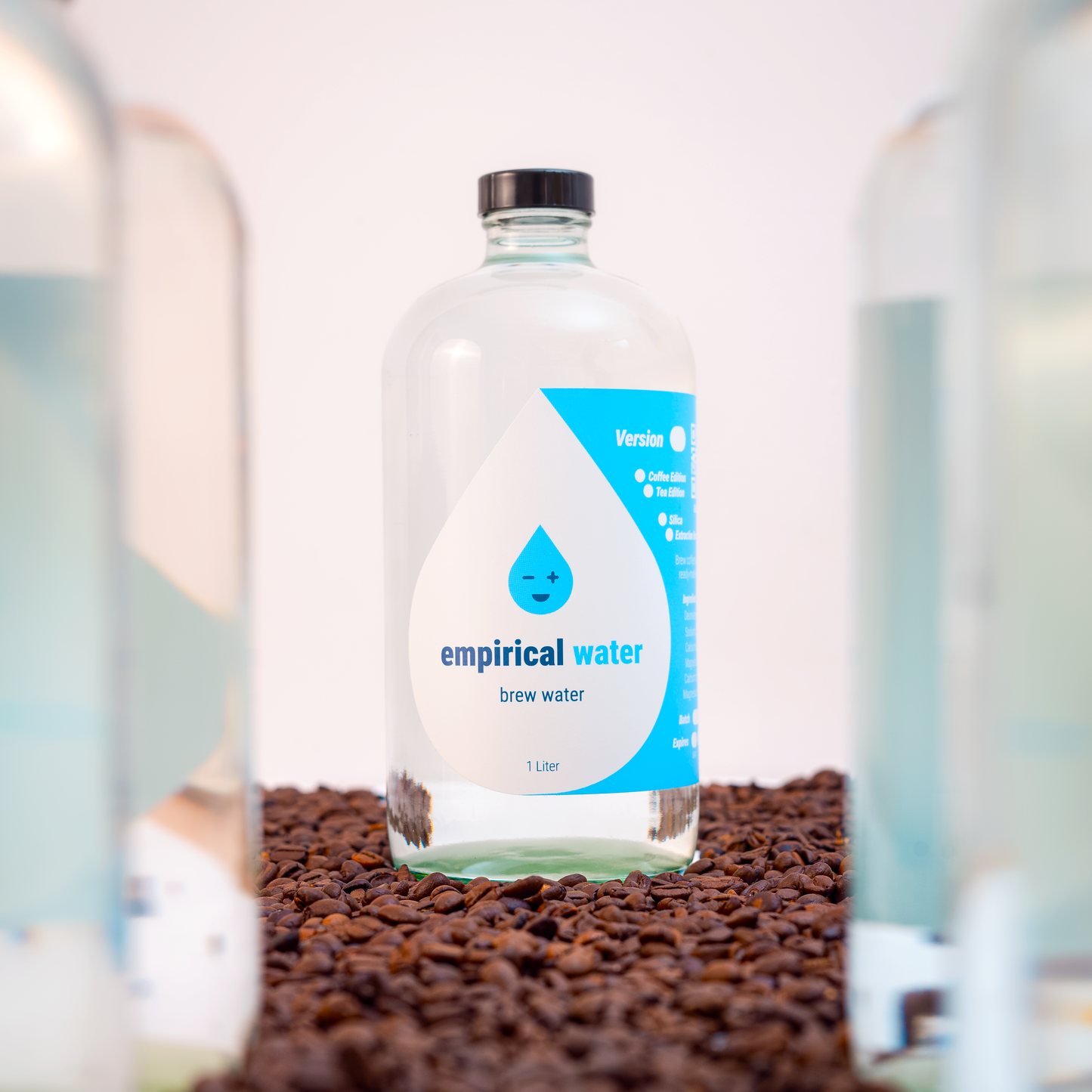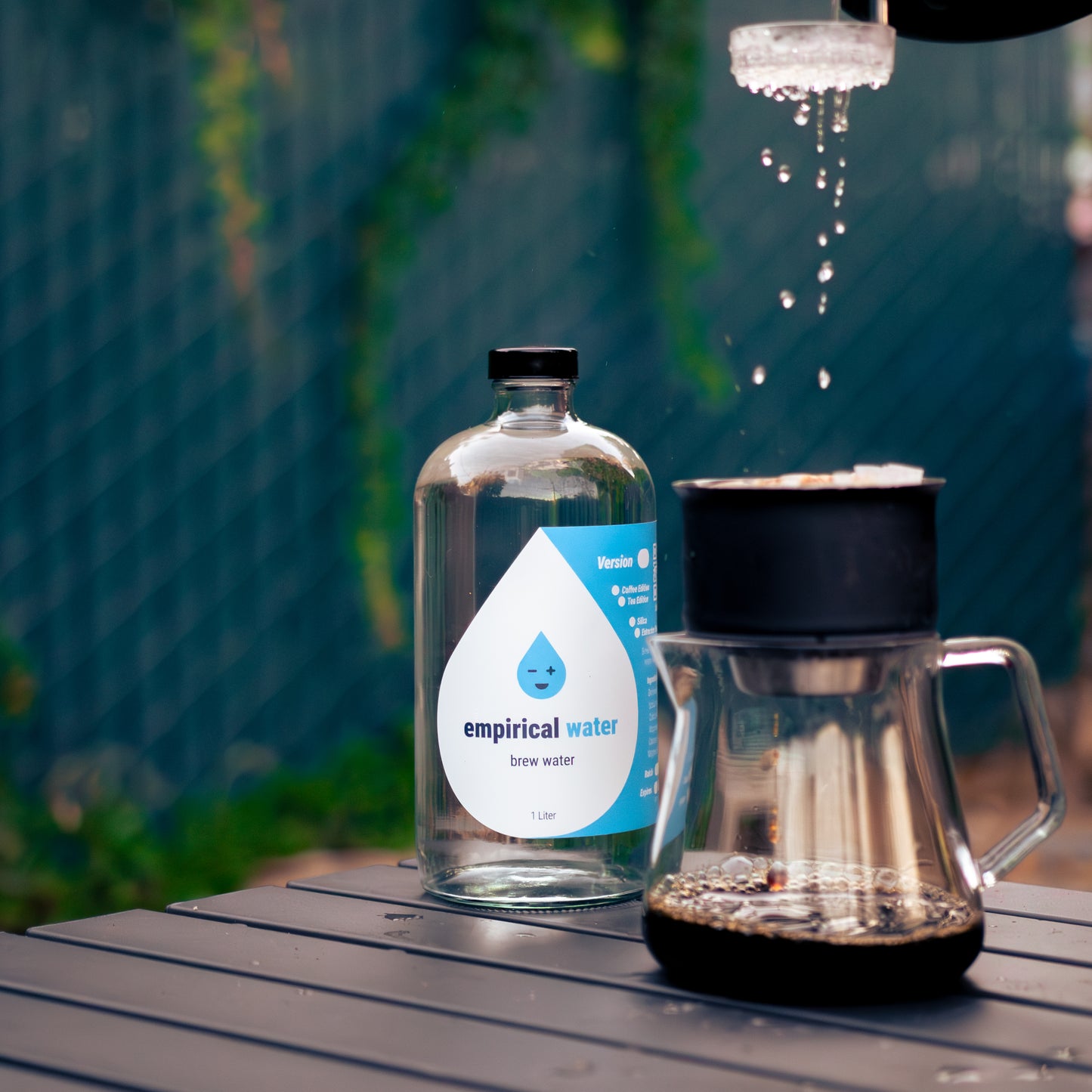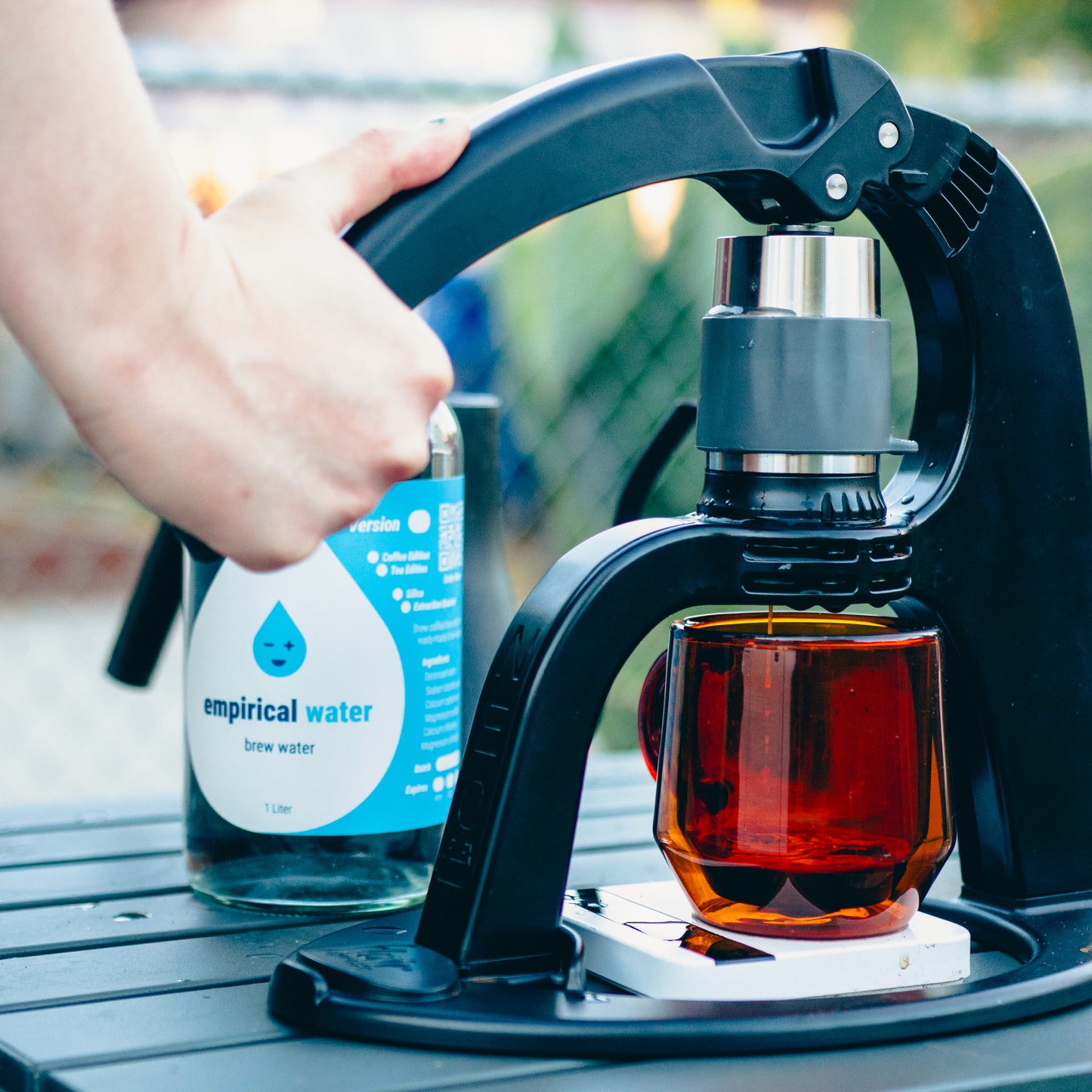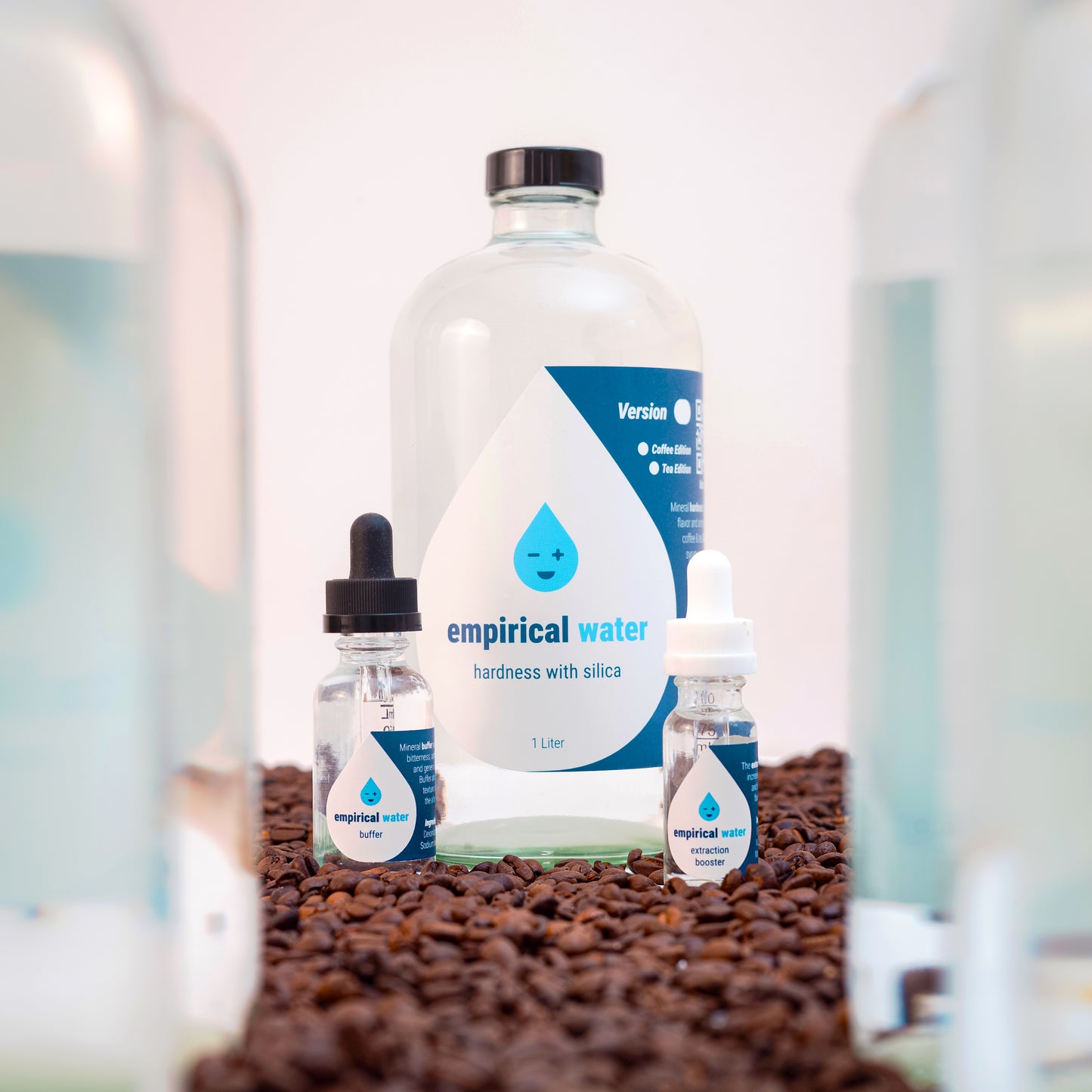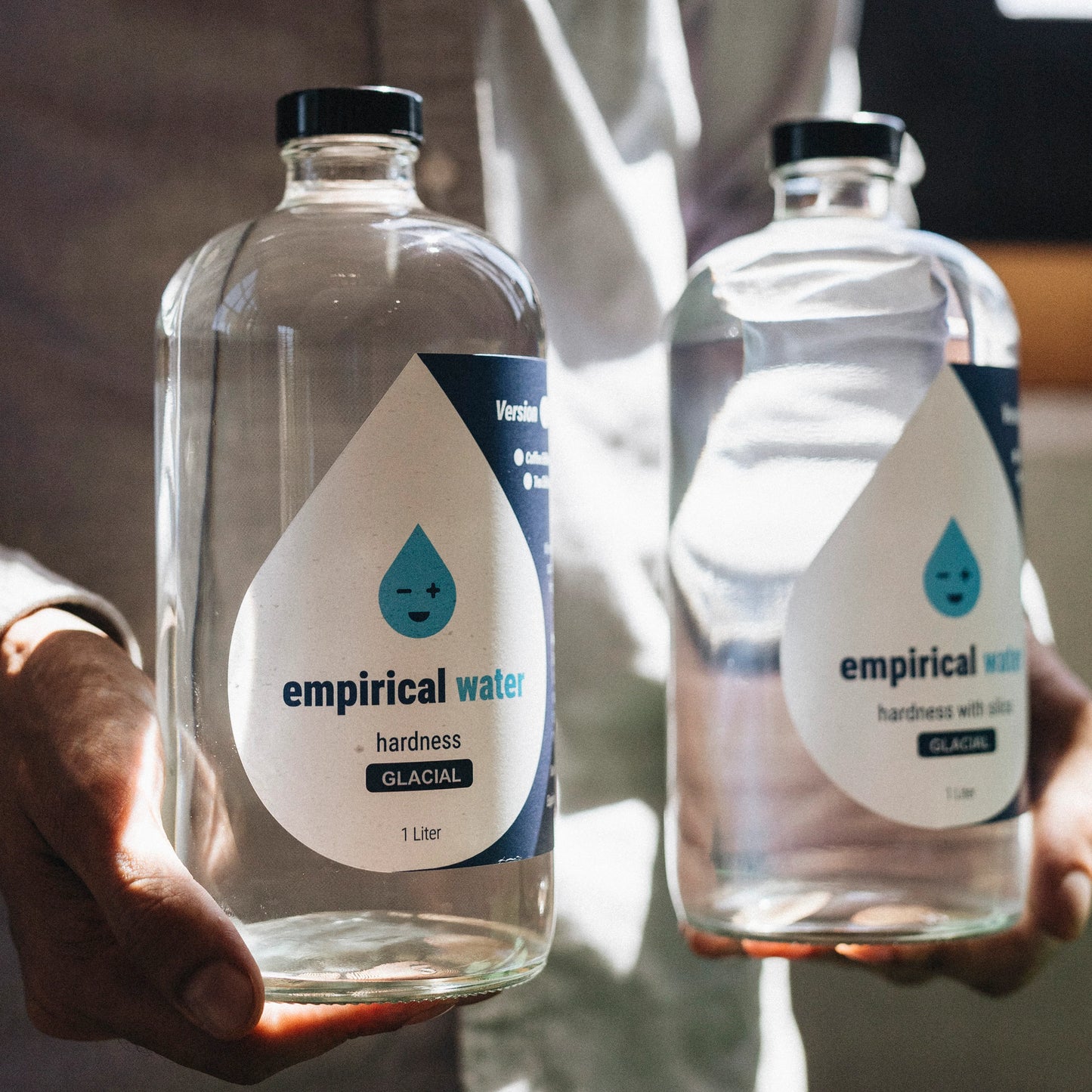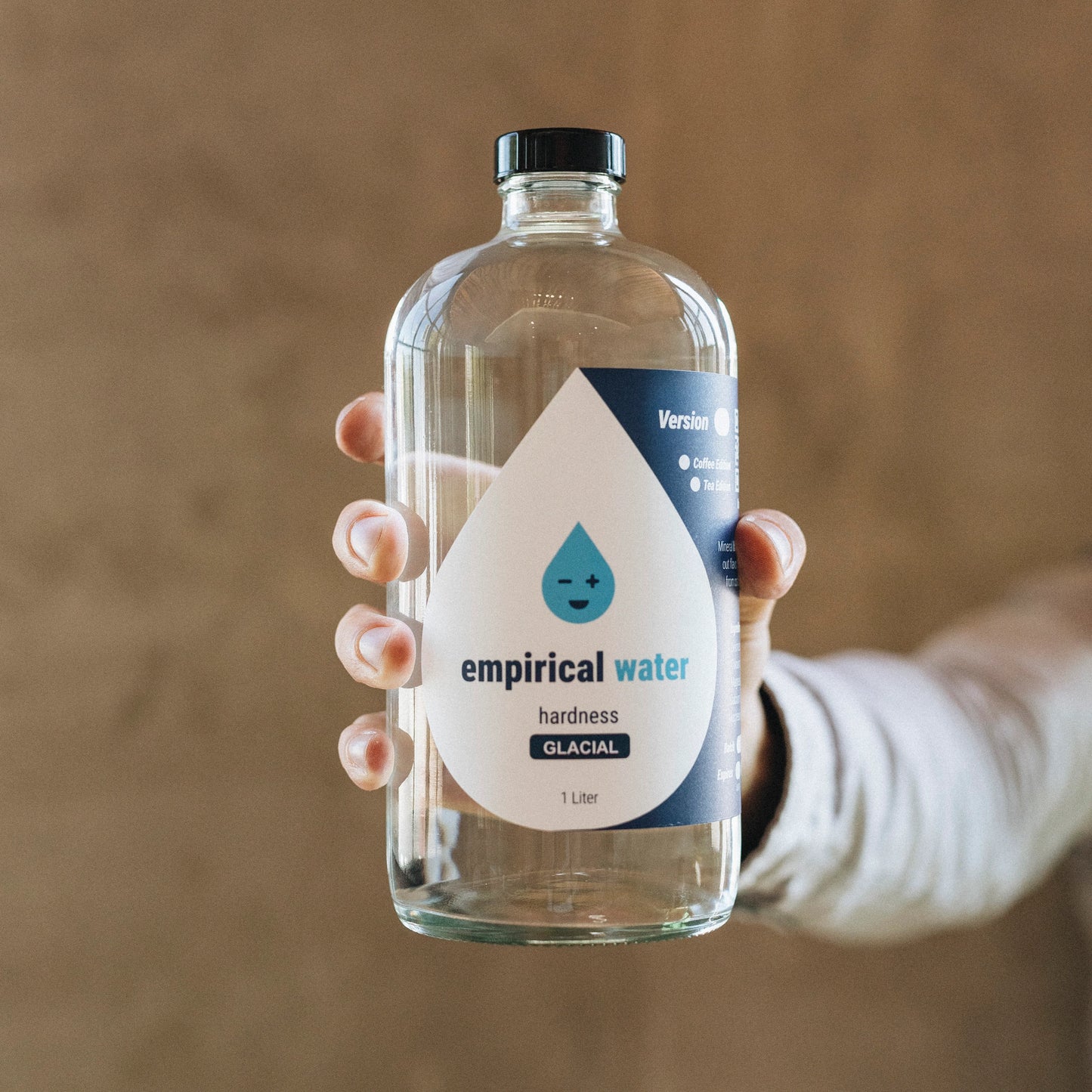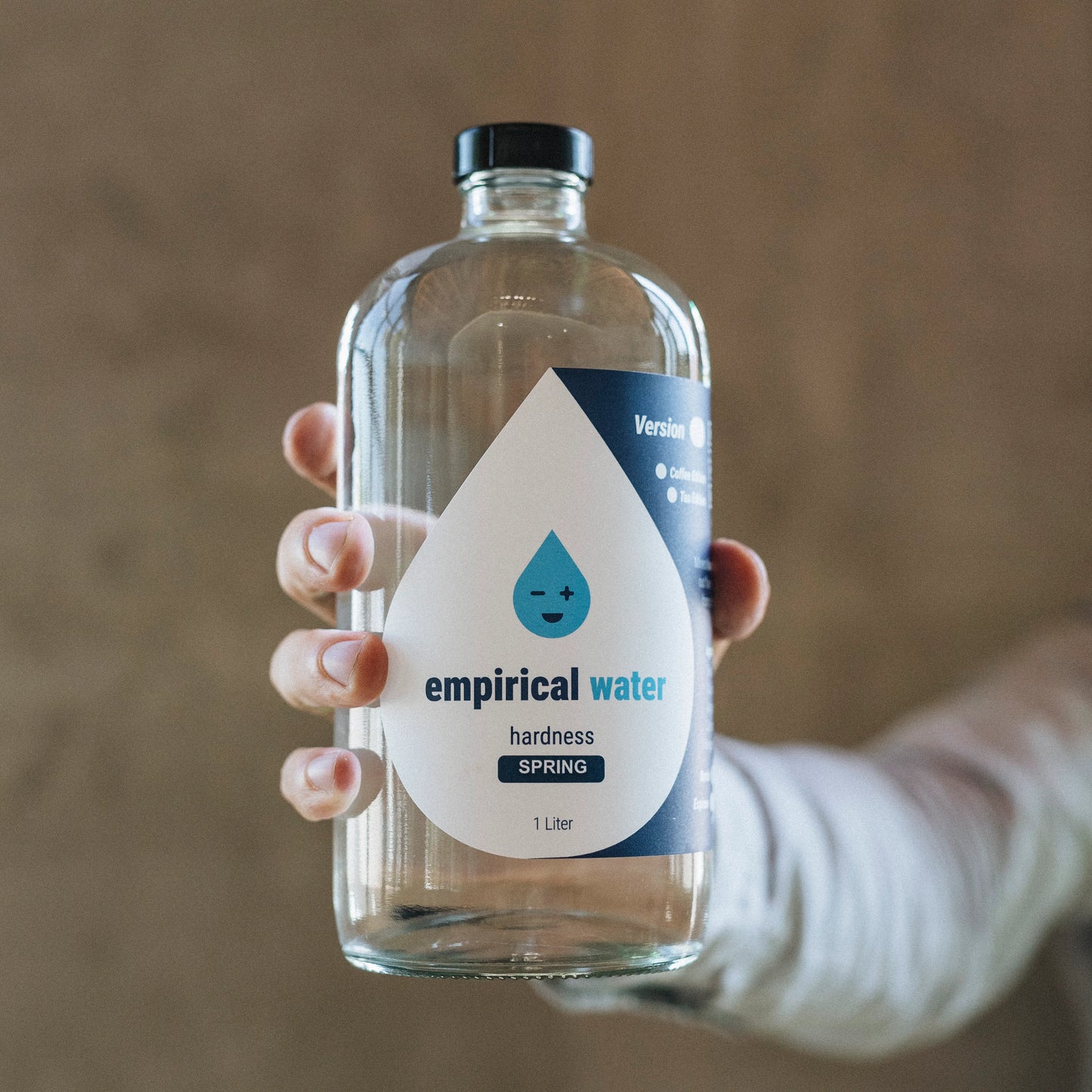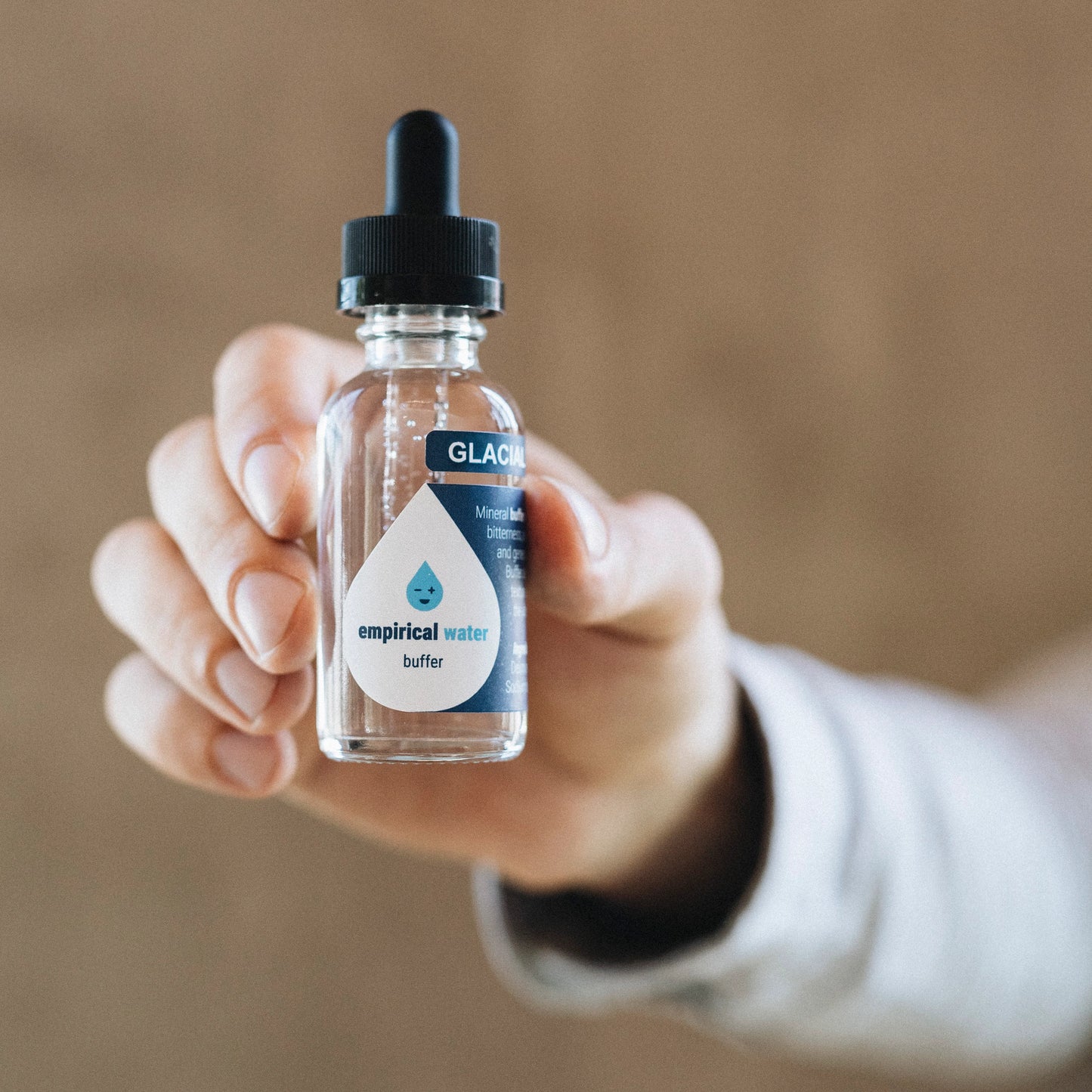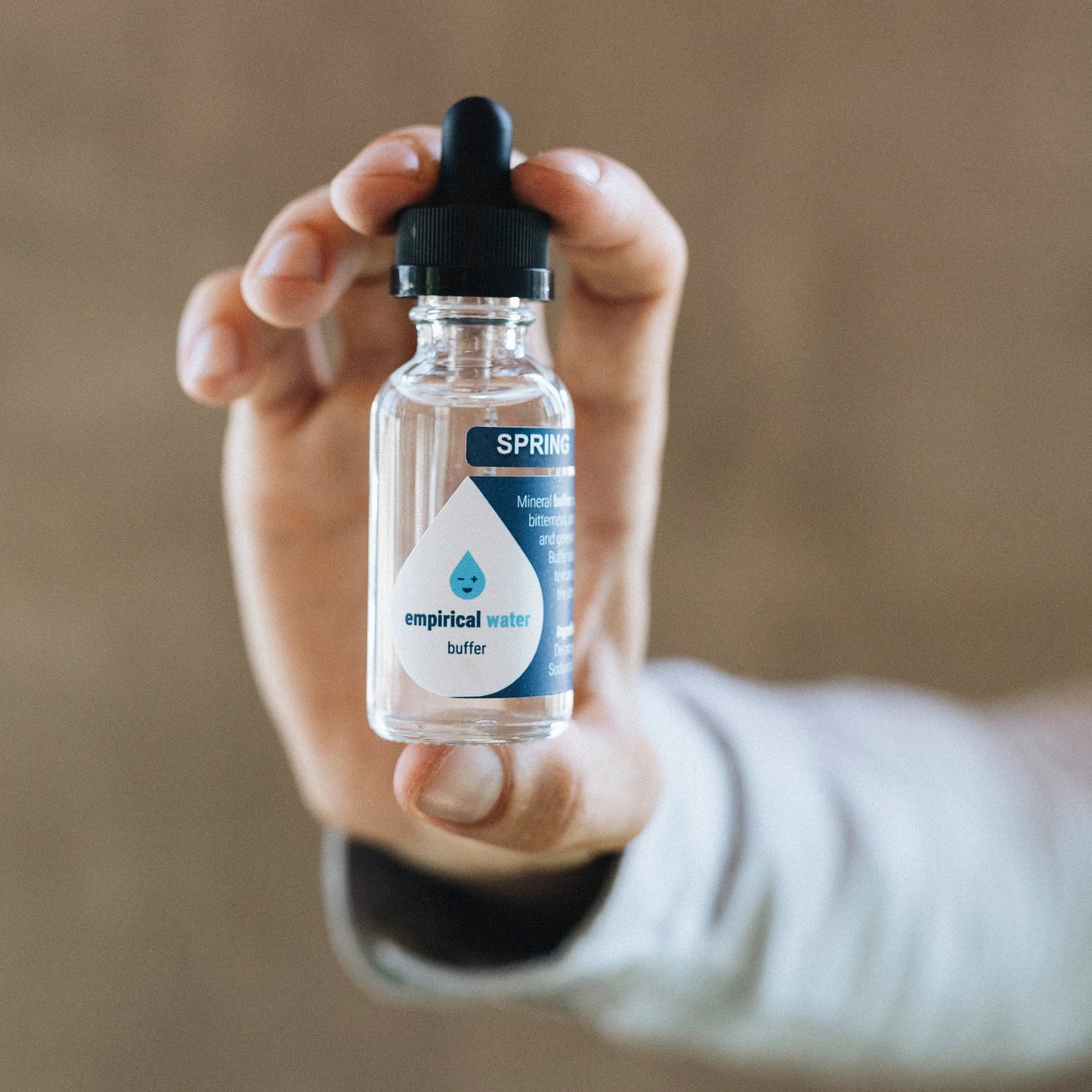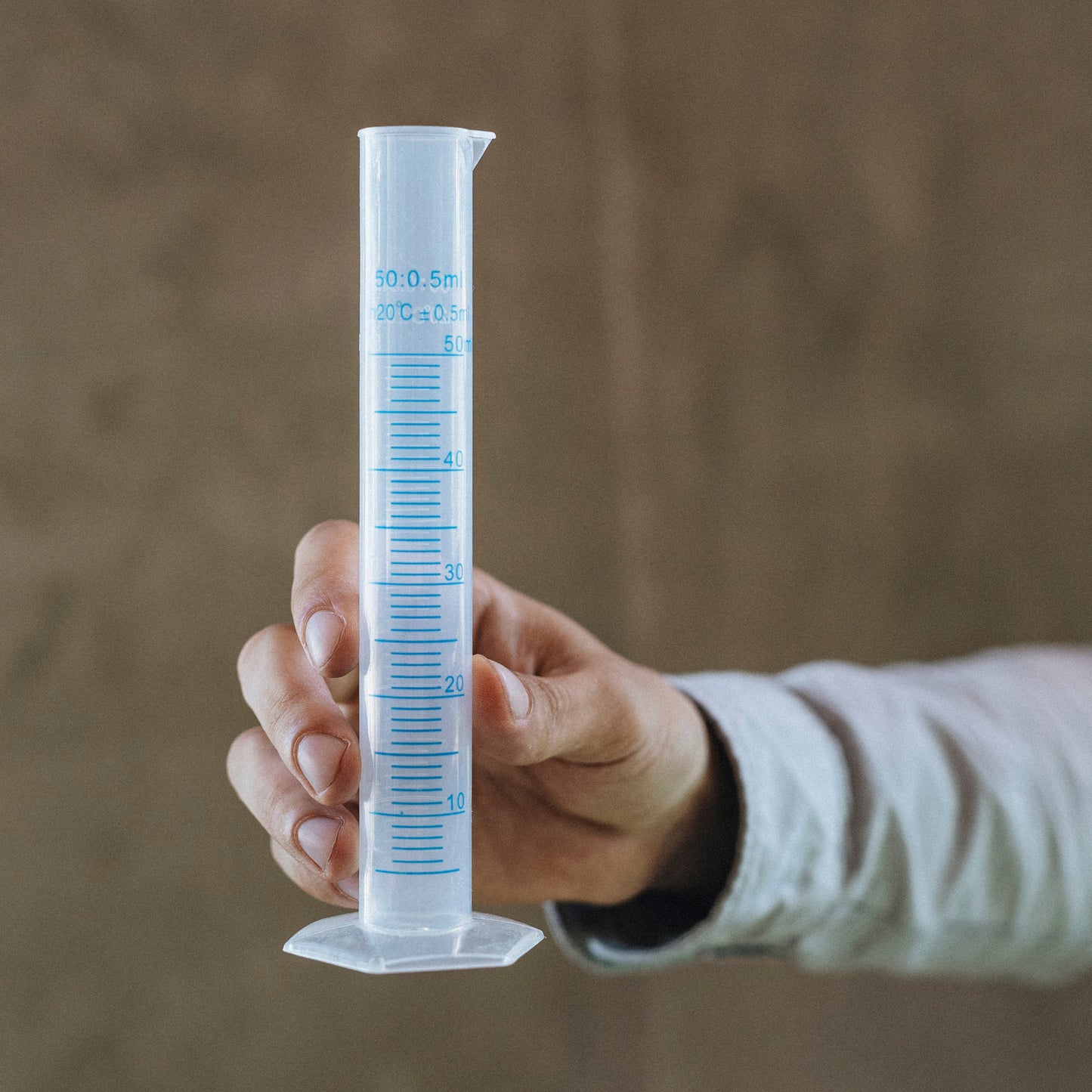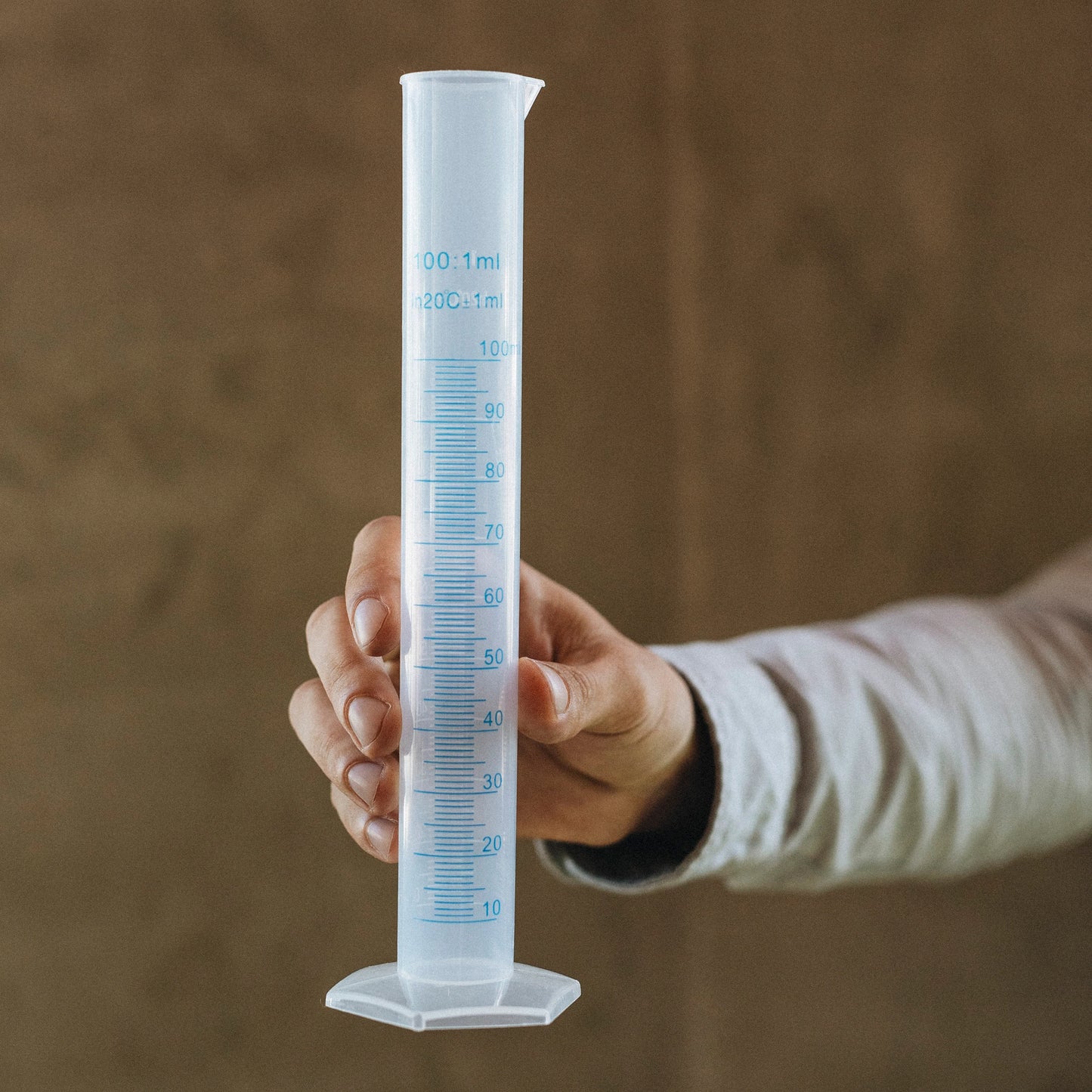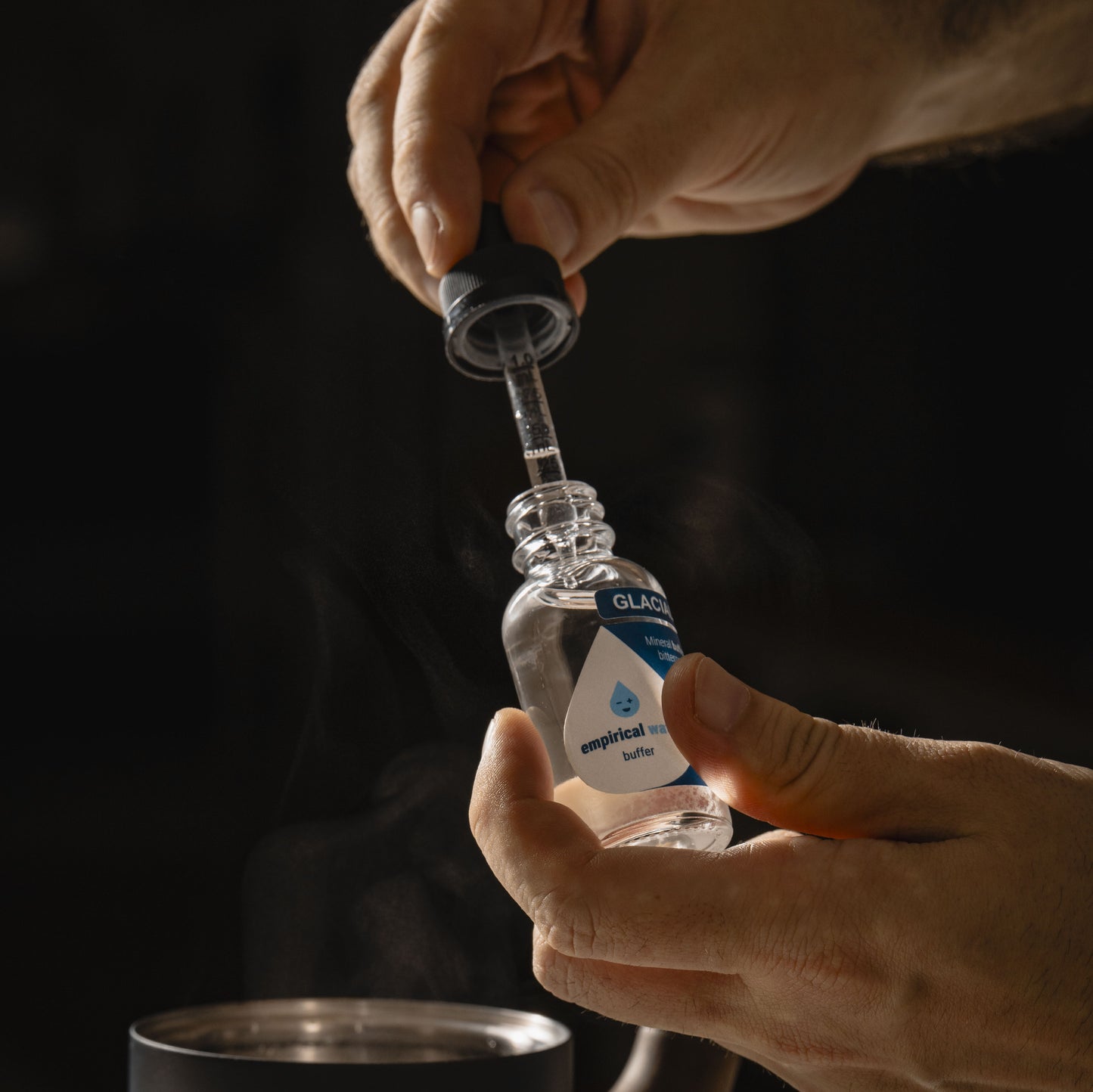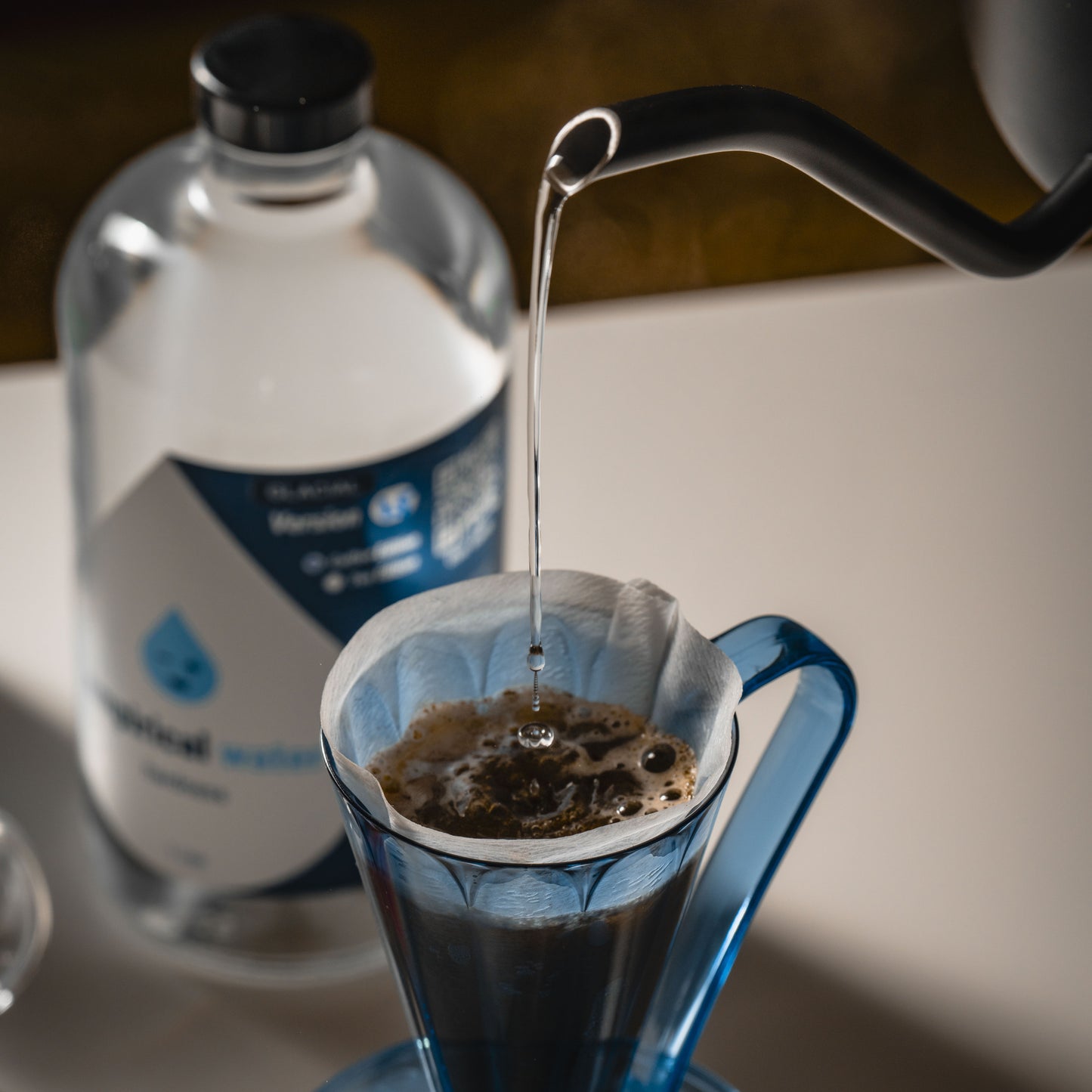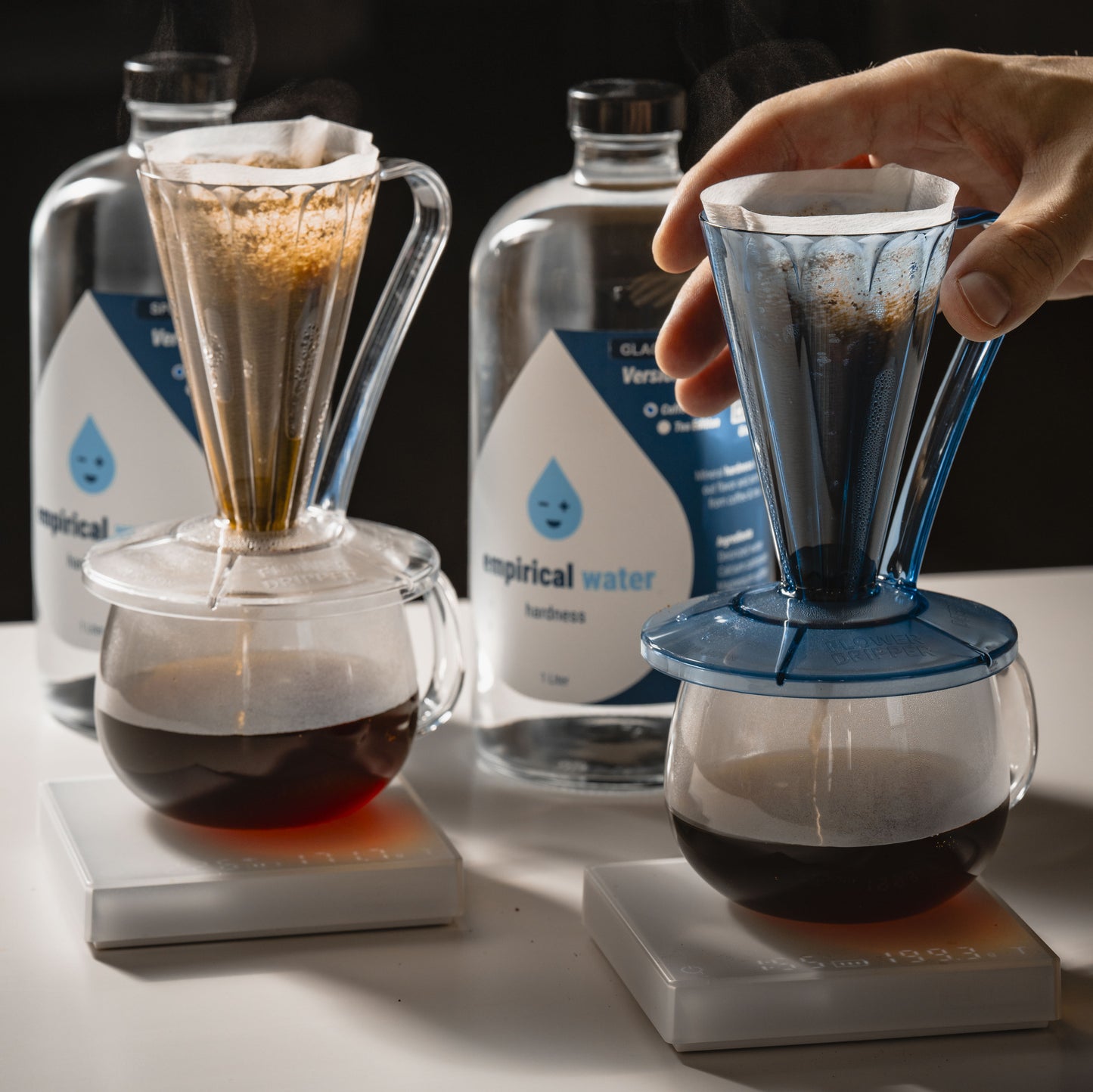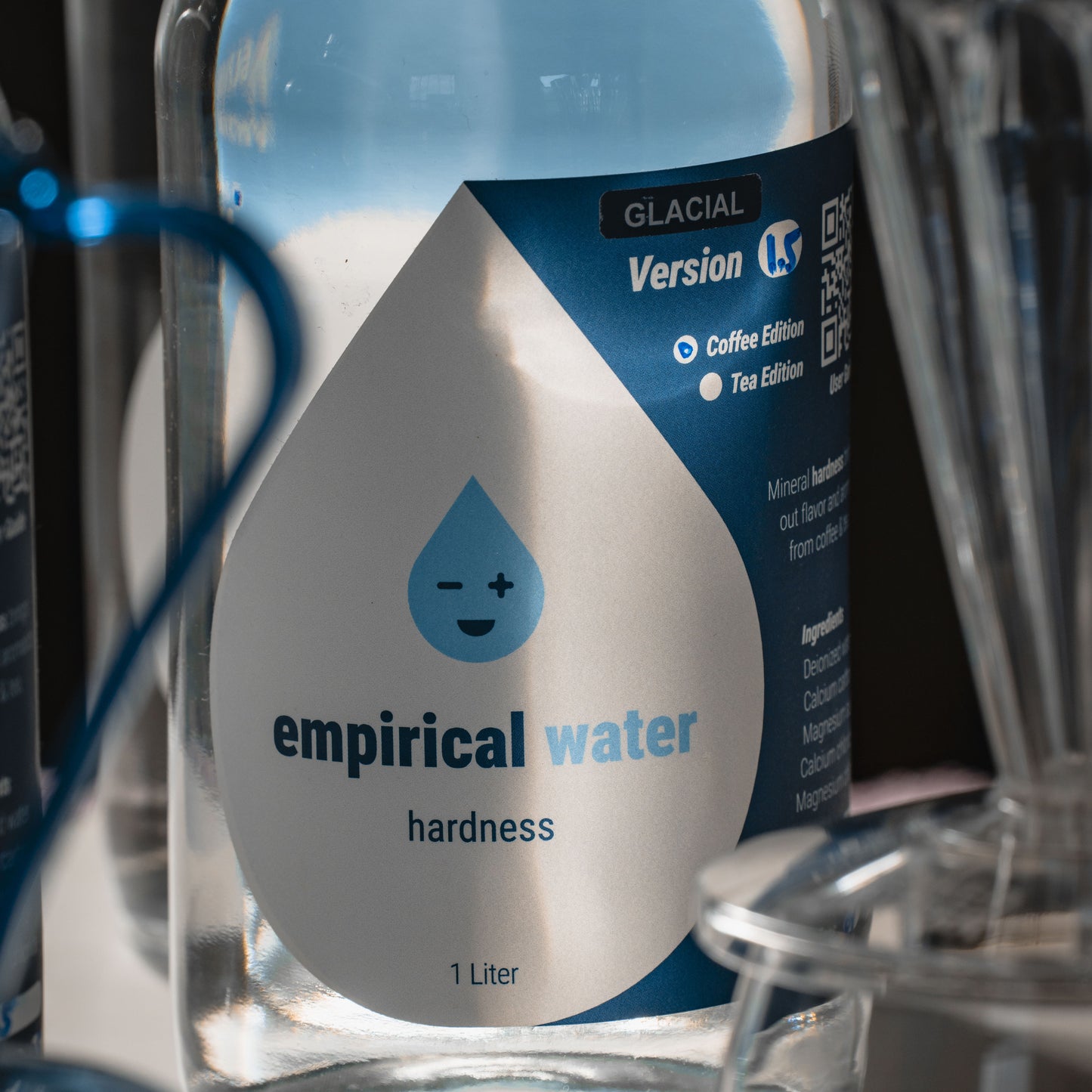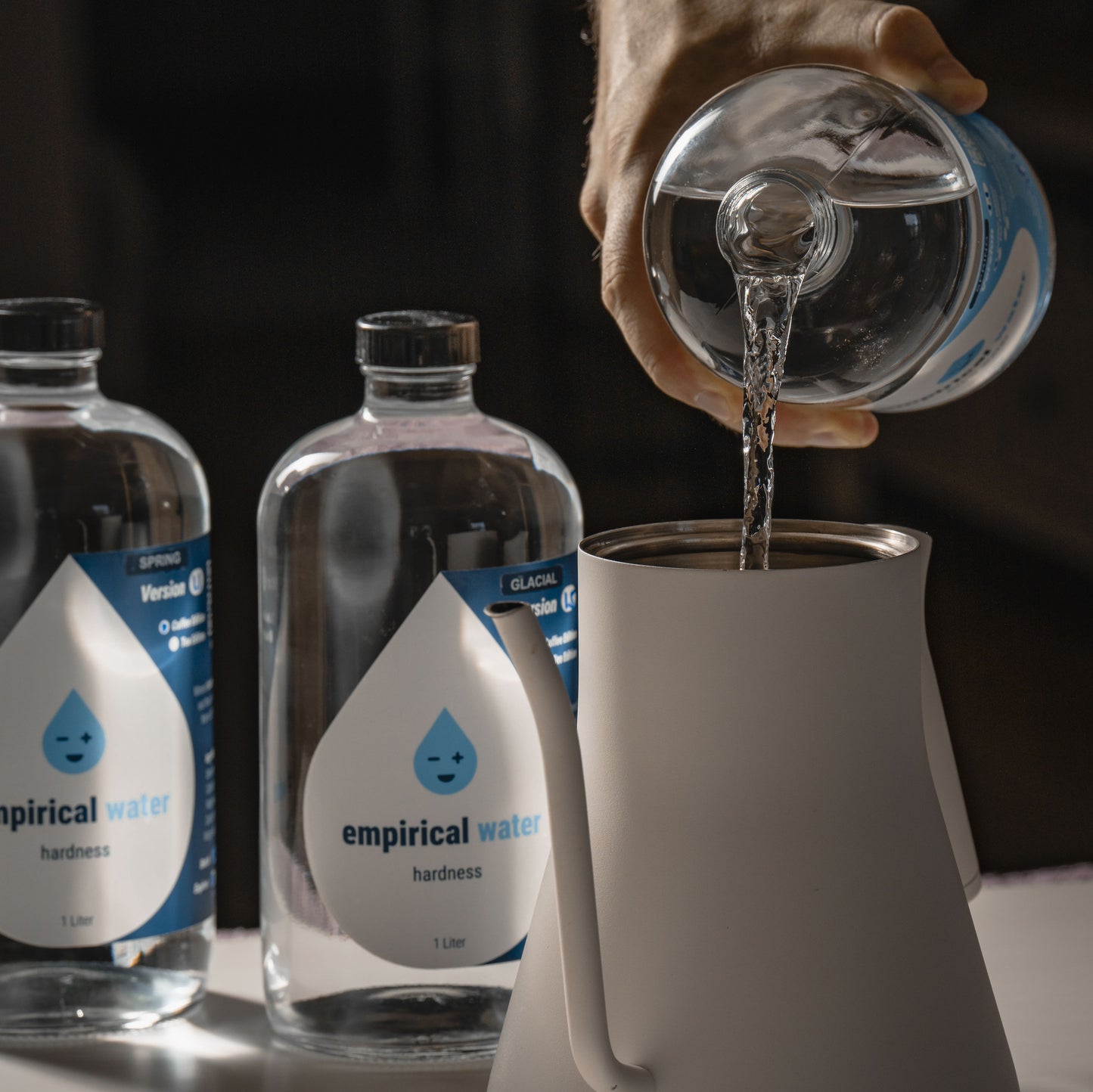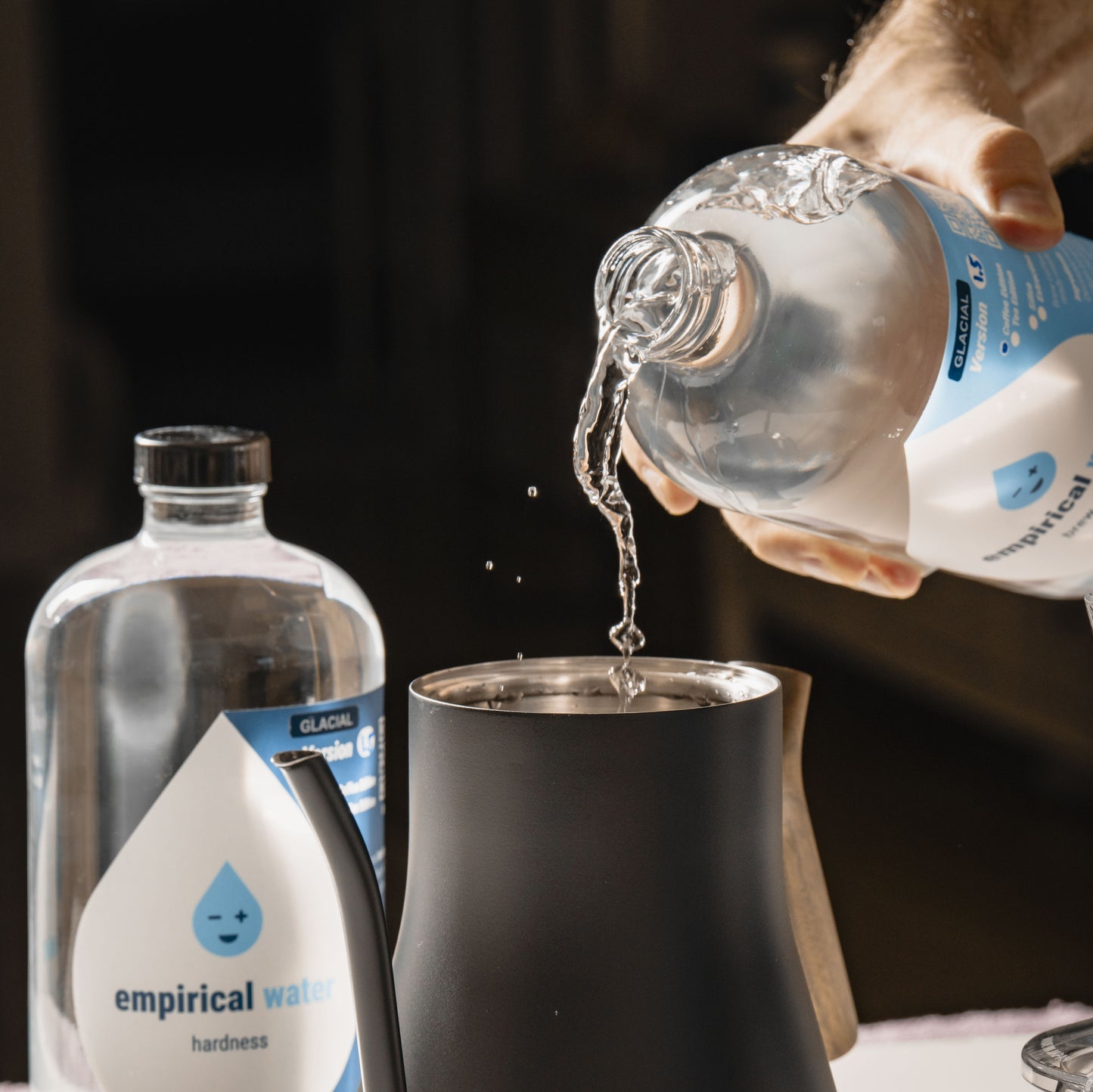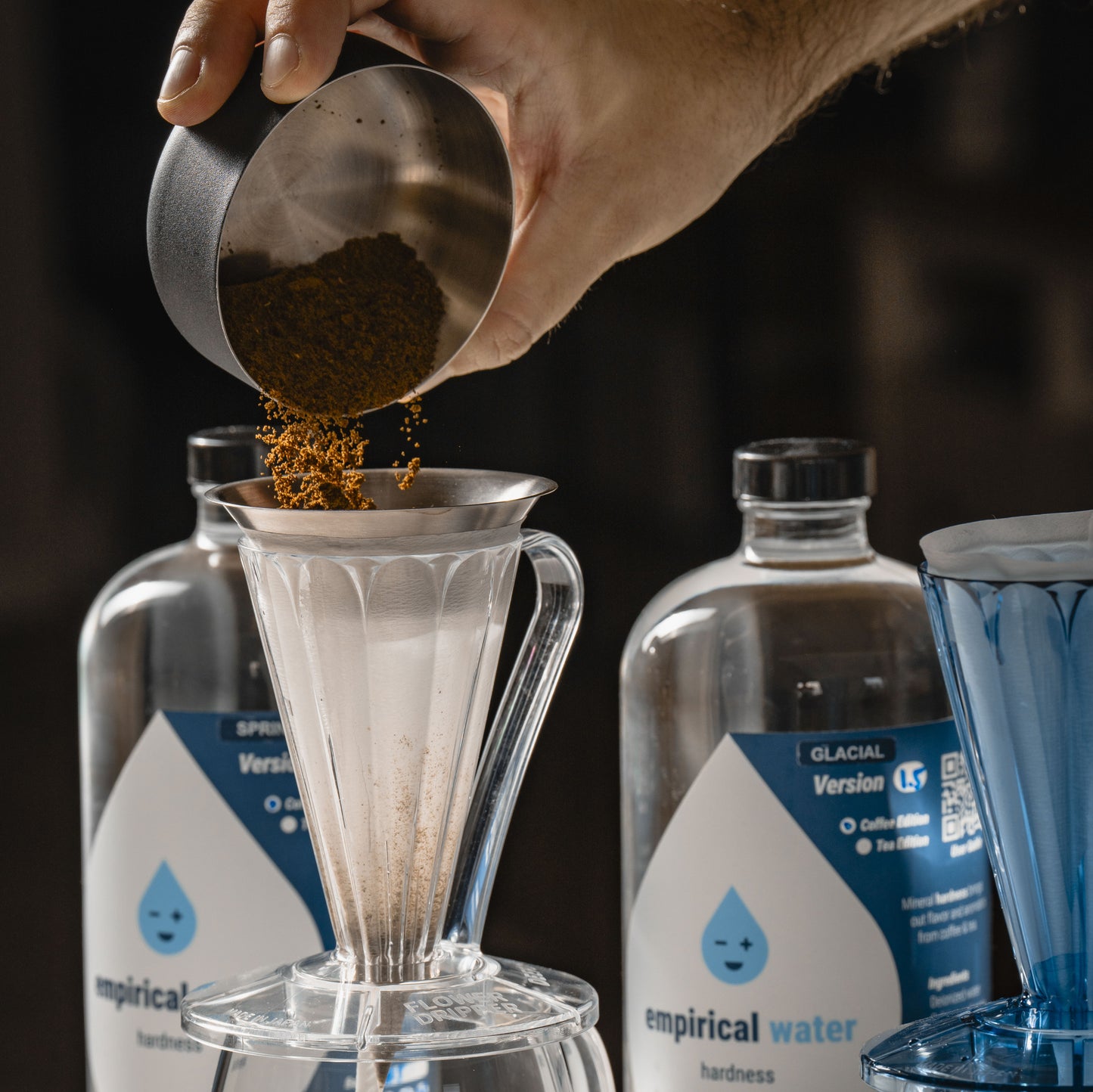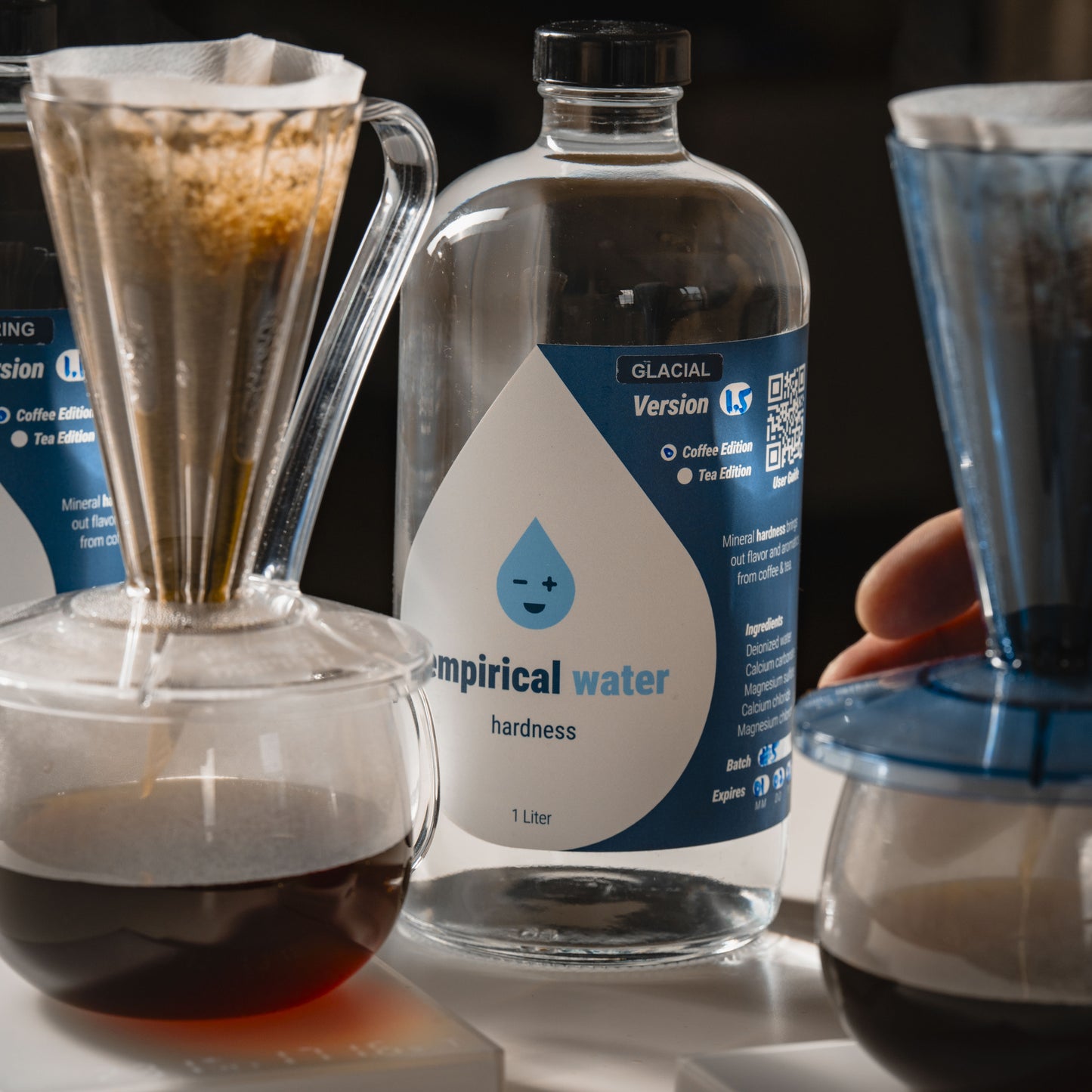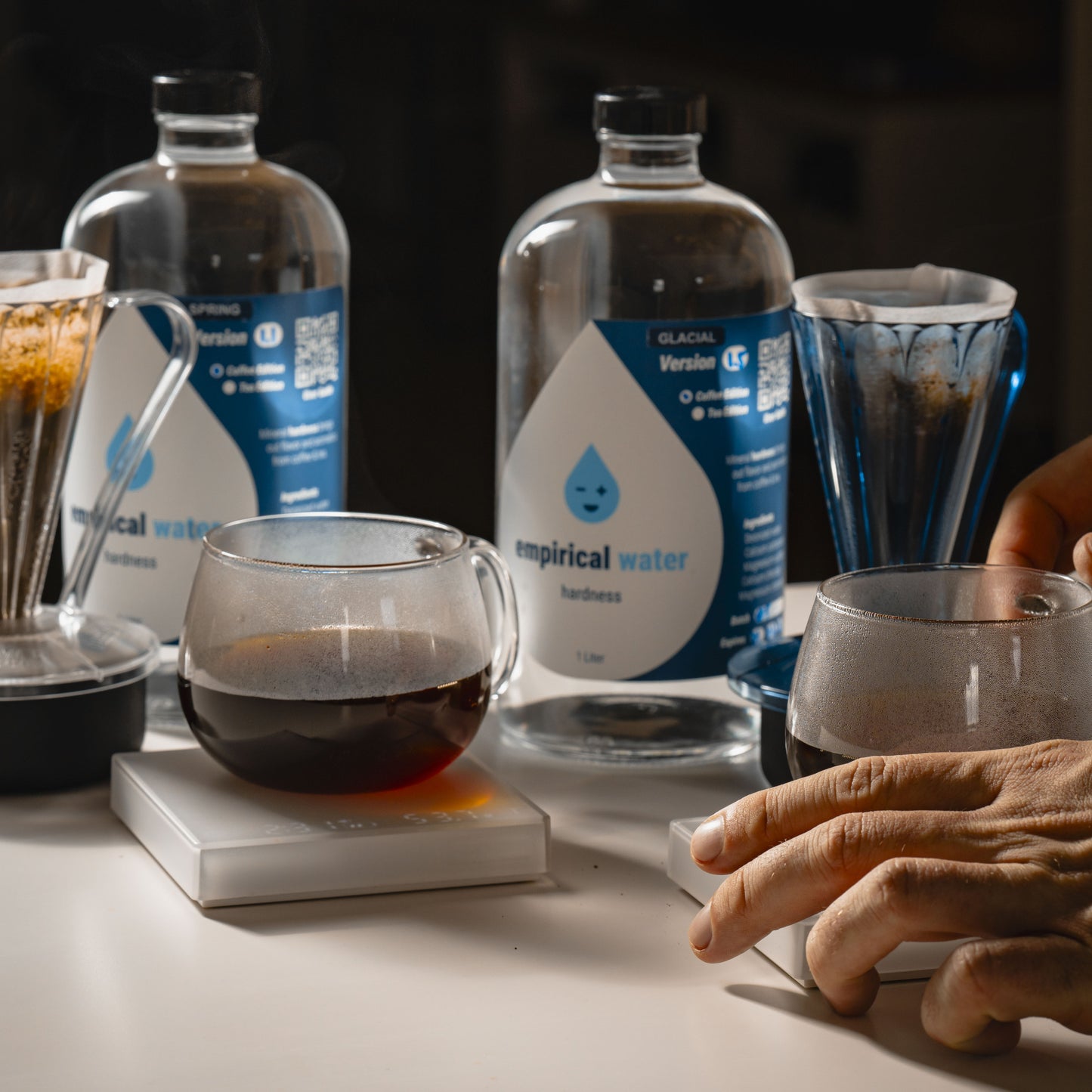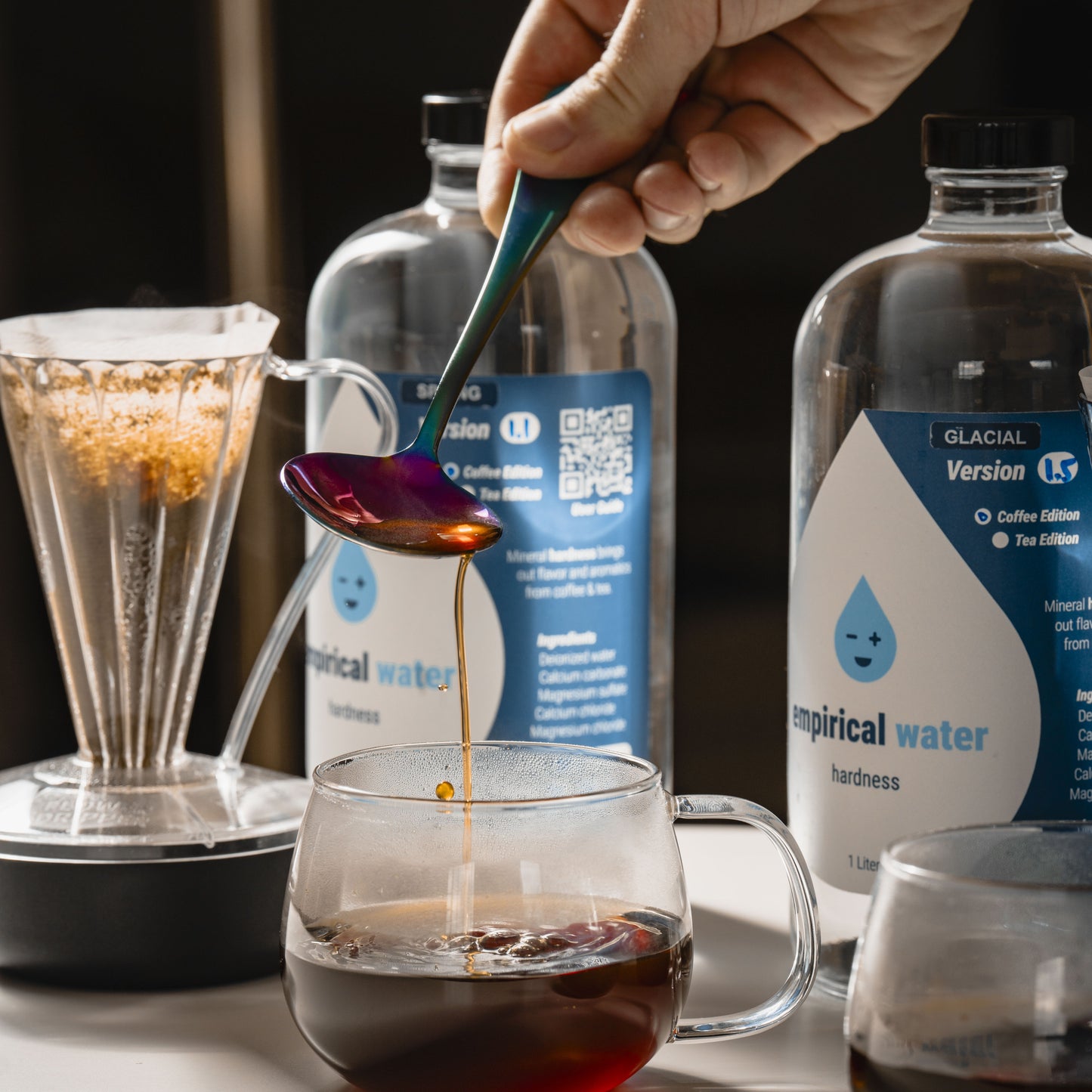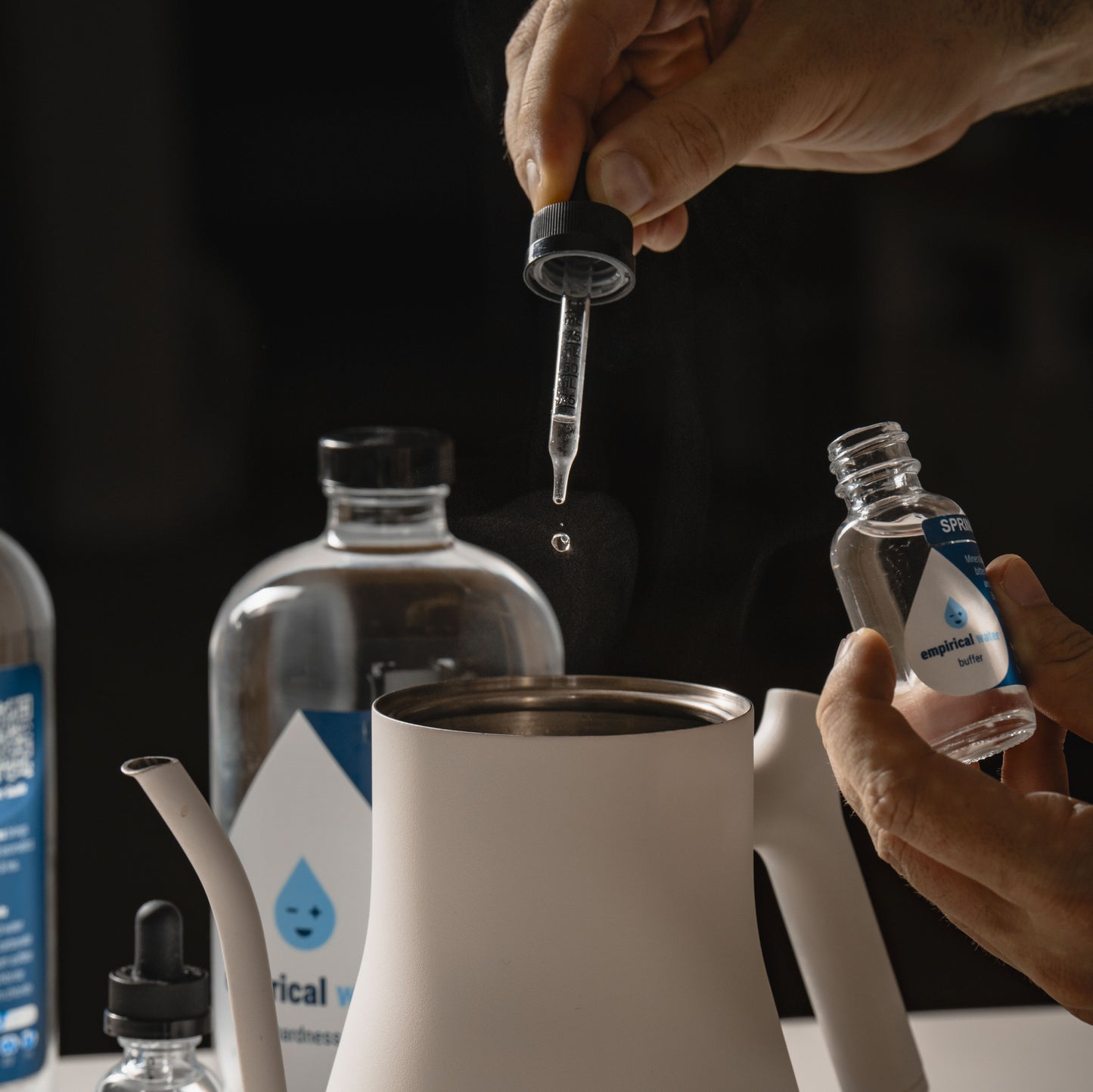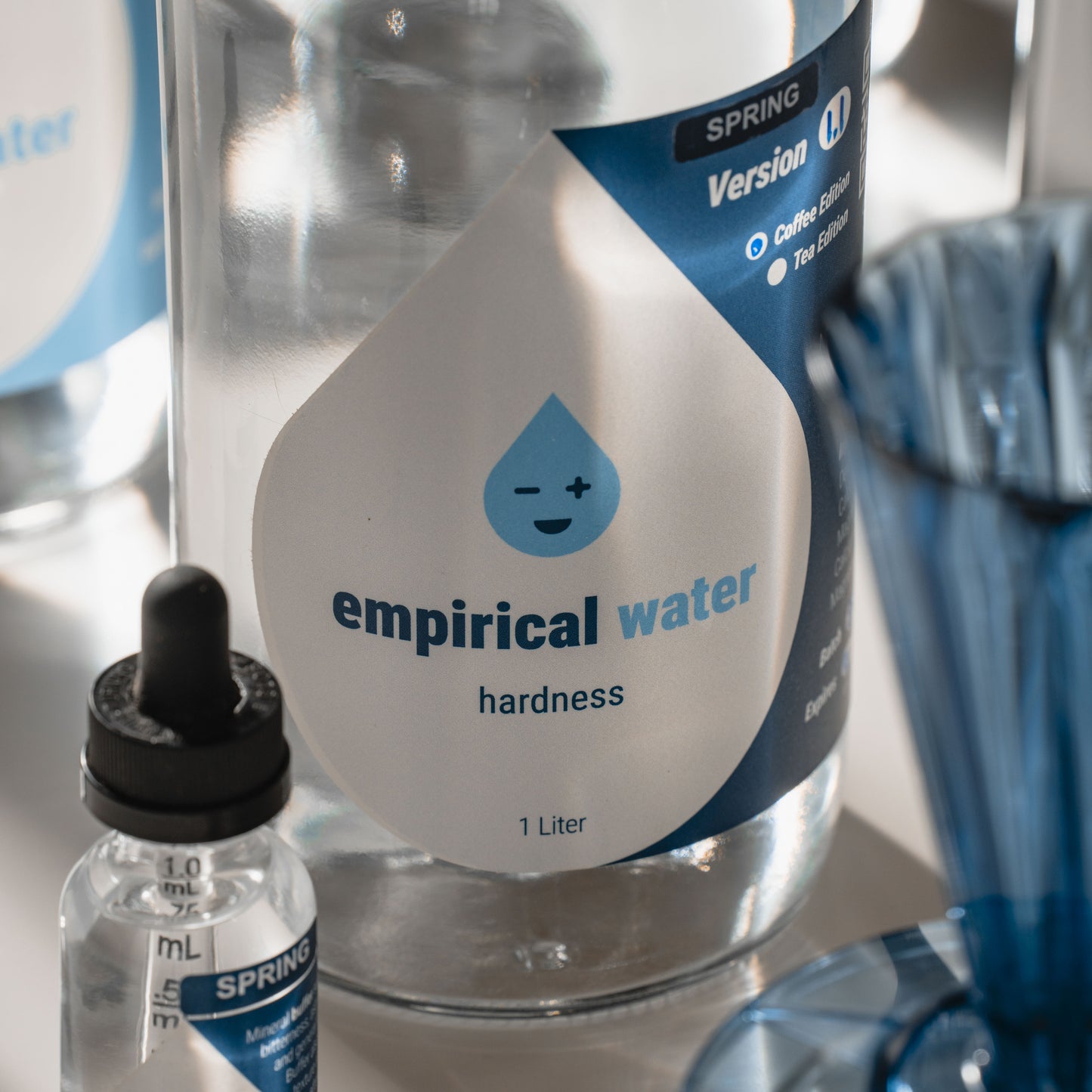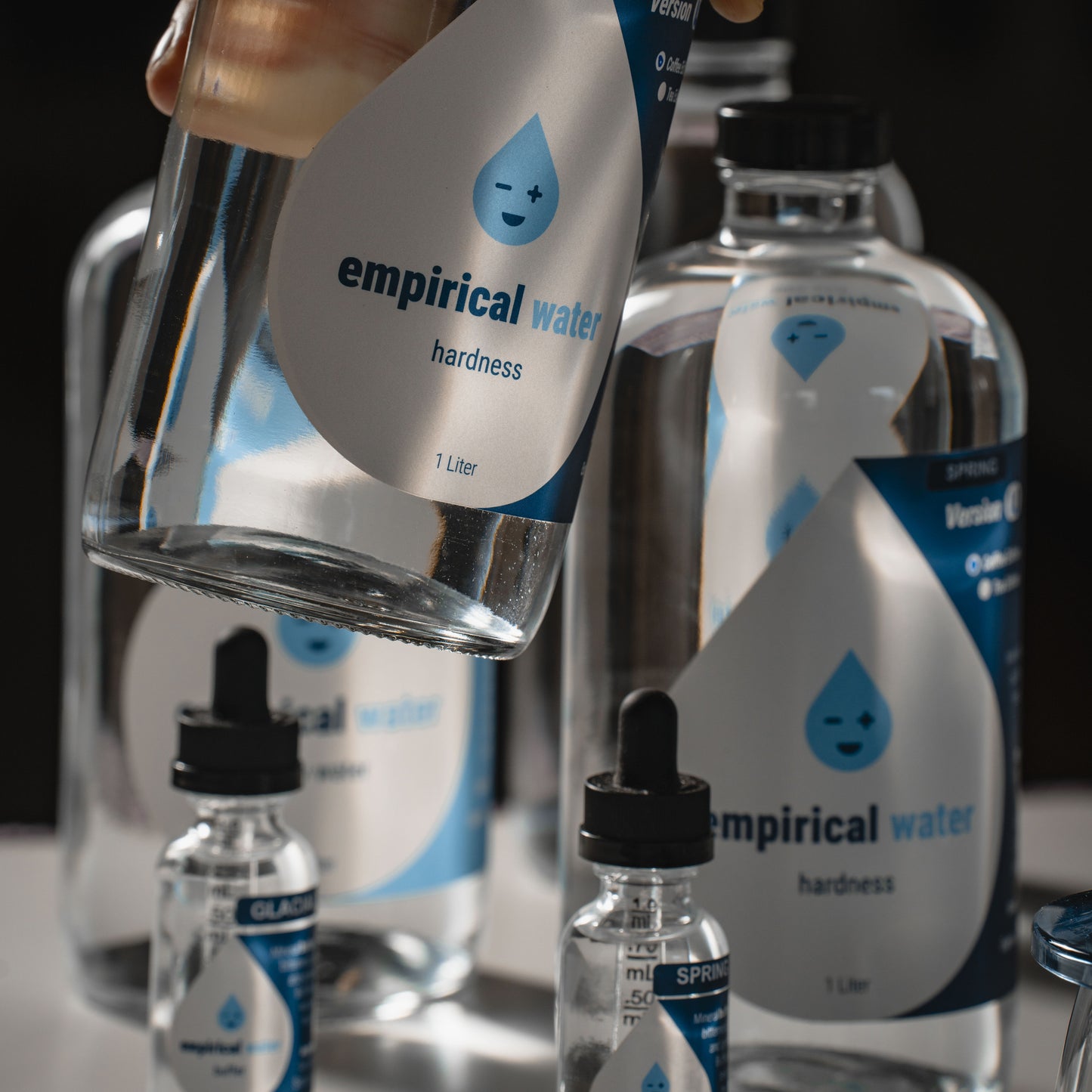3 min read
Introduction
If you've ever wondered what determines the characteristics of water for coffee, this post is for you. I'll cover my understanding of ionic mineral compounds, the individual ions, the relevant ion ratios, TDS, pH, gases, and what each means in the context of brewing coffee.
(See our World Class Endorsements!)
Mineral Compounds
There are many naturally occurring ionic mineral compounds that can be used to add mineral content to water. Listed are the most relevant mineral compounds used over the years of developing empirical water: Sodium bicarbonate, sodium chloride, sodium sulfate, potassium bicarbonate, potassium chloride, potassium sulfate, calcium carbonate, calcium chloride, calcium sulfate, magnesium carbonate, magnesium chloride, magnesium sulfate.
The current iteration of empirical water makes use of all the ions contained in the compounds listed above.
Dissolved Ions
The following ions occur in water as a result of the above mineral compounds dissociating to dissolve.
-
Calcium — Primary flavor extractor, sweetness-focused.
-
Magnesium — Primary flavor extractor, savory and acidity-focused.
-
Sulfate — Increases flavor definition and extraction intensity, at the cost of bringing out harshness and off-notes.
-
Chloride — Reduces harshness and off-notes, at the cost of reduced depth.
-
Sodium — Texture, warmth and sweetness. In excess amounts, saltiness.
-
Potassium — Brings a refreshing quality in miniscule amounts. Moderate or high amounts can register as an inedible, chemical bitterness.
-
Bicarbonate — Acts as a buffer to reduce intensity/acidity. Generally reduces top notes, making everything taste "bassy" in high amounts.
Note: Once an ionic mineral compound dissolves, the dissociated ions act independently to affect extraction. For example, you can think of magnesium sulfate as magnesium and sulfate.
Composition
To think about water effectively in a brewing context, it's helpful to group some of the ions together, with regard to how they affect extraction.
Calcium and magnesium get grouped together, as they are both primary flavor extractors, but leaning in different directions. A well-balanced water includes both the sweetness of calcium and the savoriness of magnesium. A rule of thumb for enjoyable brew water is to get one-third to half of your total moles of calcium/magnesium from the carbonate forms, which are calcium carbonate and magnesium carbonate. By using less of the chloride and sulfate forms, you get a more pure, natural flavor.
The flavor/textural definition of sulfate is countered by the smoothing quality of chloride. In balanced amounts, you get plenty of definition without harshness or off-notes.
Sodium and potassium are grouped together because you have to pick between sodium bicarbonate and potassium bicarbonate as your dedicated buffer (bicarbonate) source. Sodium and potassium can be considered less consequential than the other ions.
Then, we have the hardness to alkalinity ratio — which gives you one piece of the puzzle that affects how intensely a water will interact with coffee. Ions that contribute to hardness include calcium and magnesium, while bicarbonate makes up the alkalinity. Generally, the higher the ratio of hardness to alkalinity, the higher the intensity.
TDS
Total Dissolved Solids, expressed as mg/L or ppm. It's simply the total amount of mineral per unit of water. TDS matters, but it's far less important than composition. A huge range of TDS can work for brewing good coffee; what matters is how the composition is balanced to perform well at a given TDS. Higher TDS waters have more texture, but it's a fool's errand to generalize beyond that.
pH
A pH of 7 is neutral. With regard to the resulting brew, lower pH generally correlates with increased acidity and intensity. Higher pH correlates with decreased acidity and intensity.
At empirical water, we decarbonate our hardness concentrate to a pH of 7.0-7.5. The pH of the resulting brew water can vary depending on the zero TDS water used to dilute the concentrates, as well as the exact ratios of concentrates used. The default version of empirical water produces pH readings of about 8.0-8.5.
Gases
Dissolved gases in water affect pH and texture. Aerating the water before brewing can attenuate the flavor intensity of the brew and boost body. It is a good idea to try aerating distilled water that tastes flat and lacks liveliness in the cup when used to brew coffee. This is because the distillation process strips naturally present gases in water. This is why deionized water usually performs better in the cup than distilled water. See more on that here.

